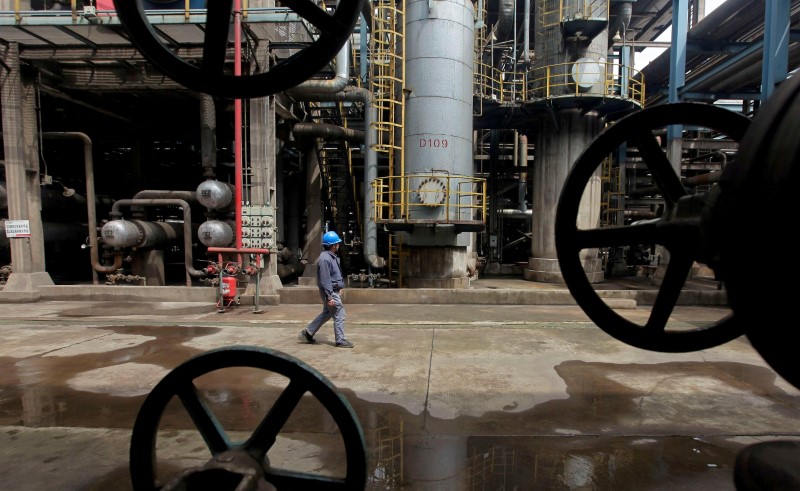By Leika Kihara
TOKYO (Reuters) – The Bank of Japan is expected this month to broadly maintain its projection that trend inflation will stay near its 2% target in coming years, despite global economic uncertainties and soft consumption, say sources familiar with its thinking.
The projection will be part of the bank’s quarterly outlook report due at its next rate review on Jan. 22-23, when the board is widely expected to keep ultra-loose policy settings unchanged.
Any such forecast will likely underscore the BOJ’s cautious optimism that the economy was making steady progress towards sustainably achieving its 2% inflation target – a prerequisite for pulling short-term interest rates out of negative territory.
The BOJ has maintained its short-term interest rate target at -0.1% and the yield target around 0% since 2016.
“Consumption is holding up and there’s growing conviction that wage hikes will continue, and even broaden, this year,” one source said.
“The broad uptrend in inflation and wages remains intact,” said another source, a view echoed by three other people.
In the quarterly outlook report, the nine-member board releases a median projection on economic growth, core consumer inflation that strips away the effect of volatile fresh food prices, and “core core” inflation, which also excludes fuel costs.
The board is likely to cut its core inflation forecast for fiscal 2024, which begins in April, from the current projection of 2.8%, due to recent falls in prices, the sources say.
But it is likely to make no major changes to its forecast that “core core” inflation, which the BOJ sees as a better gauge of the broader price trend, will hit 1.9% in both fiscal 2024 and 2025, the sources say.
UEDA’S FOCUS
Reflecting a sharp economic contraction in July-September last year, the BOJ will likely cut its growth forecast for the current fiscal year ending in March from 2.0%, the sources say.
No major changes are expected, however, to the board’s current forecast of a 1.0% expansion for both fiscal 2024 and 2025, they say.
With inflation having exceeded the BOJ’s 2% target for well over a year, many market players expect the central bank to exit negative interest rates sometime this year in what would be a landmark move away from decades of ultra-loose monetary policy.
In deciding when to make such a move, BOJ Governor Kazuo Ueda has said he will focus on whether inflation can stay around 2% for a durable amount of time while wages rise on a sustainable basis.
Many BOJ policymakers see the economy as making progress towards meeting the threshold for ending negative rates, though they are divided on how long they should wait, according to the sources and minutes of recent BOJ policy meetings.
China’s economic weakness, lingering signs of a global slowdown and soft domestic consumption cloud the outlook for Japan’s fragile recovery and price outlook.
In the report, the BOJ will likely nod to momentum in rising wages by companies, but stress the need to scrutinise whether the pay rises will broaden and prod firms to pass on higher labour costs via price hikes, the sources say.
Market expectations of a January policy shift have receded after a devastating earthquake that hit western Japan on New Years day and last month’s dovish comments by Ueda.
The BOJ’s January quarterly report and Ueda’s post-meeting briefing may offer clues on whether the central bank could phase out stimulus either at its March or April meetings.
Among key events that may sway the timing is the conclusion of annual wage negotiations between big firms and their unions in mid-March. The outcome becomes a benchmark for wage talks among smaller firms and sets the trend for nationwide pay.
Read the full article here







